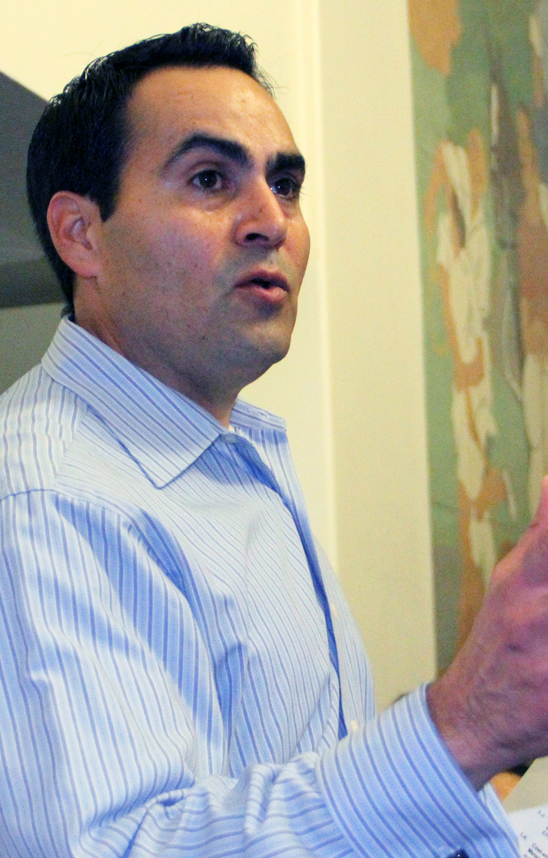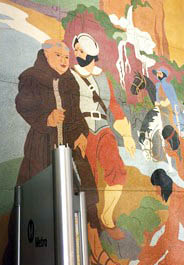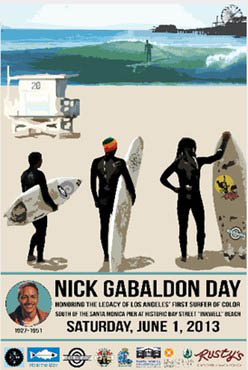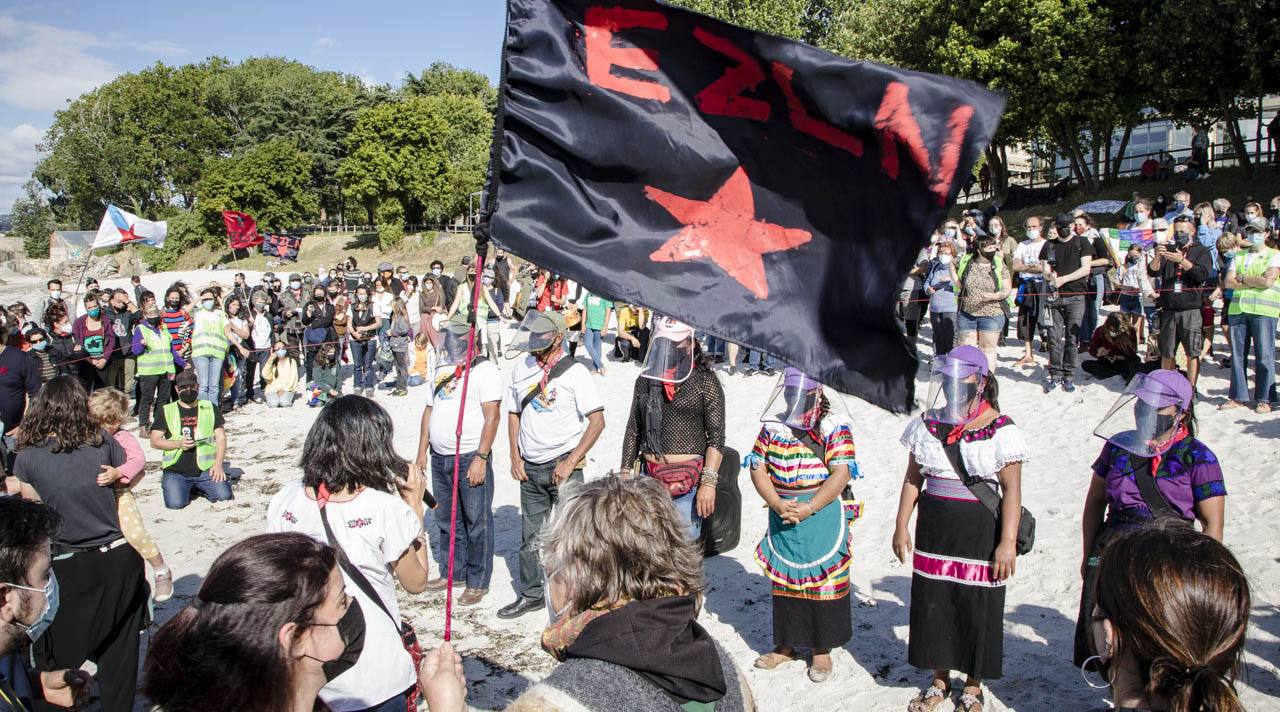|
|
|
|
The weekly newsletter of the México Solidarity Project |
|
|
|
July 21, 2021/ This week's issue/ Meizhu Lui, for the editorial team |
|
|
Art in the Public Square: Oppression or Liberation? |
|
Monuments in spaces where the public congregates can be as much advertising as art. Monuments often function as “ads” for conquerors and military commanders. The statues say to all who walk by: “Buy this story, accept this guy as your hero!”
In our interview this week, Santa Monica City Councilor Oscar De La Torre challenges the message of a mural at his City Hall entrance that “whitewashes” how the Spanish brutally subjugated indigenous people. De La Torre and his California community aren’t buying that message. Public art, they insist, must not put white supremacy on a pedestal. That message is getting across elsewhere. In Charlottesville, Virginia, public outrage recently pushed Confederate General Robert E. Lee off his high horse.
Art for the public can and should be inspirational and aspirational. At this task, the Zapatistas have become masters, as they show in their recent “invasion” of Europe, a complex work of art complete with a “navy” and an “air force.” The boat they sailed in and the war plane they are building mimic and mock the instruments of traditional military power. Their army and navy come to conquer with the power of love, respect, and cooperation.
The Zapatista artwork’s images and artifacts — their voyage from México itself — come across as whimsical, even humorous. But the Zapatistas aren’t joking. They’ve demonstrated over the years that they can be capable of real military defense. What they have created, what they defend, the story they want to tell all amount to a vision and a model of what can be. Objects in the public square can themselves be instruments of oppression or vehicles for liberation. The people are choosing. The people will choose. |
|
|
Oscar De La Torre’s parents hailed from Jalisco, México. But he was born and bred in Santa Monica, California, a city he has now served as an elected school board member and more recently as a city councilor. In that service, De La Torre has never pulled his punches, especially when it comes to naming white supremacist practices and demanding they be ended.
For nearly 80 years now, a mural has been the first thing anyone entering the Santa Monica City Hall sees. What does that mural depict?
The mural depicts Santa Monica’s historical starting point in 1769, when the conquistadors arrived to colonize at sword point what was then still a part of México. We see a Spanish priest, with an armored soldier holding a sword standing next to him. The priest is pointing at two naked Native Americans kneeling at his feet next to some water. |
|
|
Opposite the mural of Santa Monica’s founding is another mural intended to offer a vision of the city’s future. The people in this image are all white — even the dog is blond! — and they’re playing tennis and polo, sports of the rich.
You campaigned to take down the historical mural. Were you influenced by African Americans in the South demanding the removal of monuments to Confederate leaders?
Yes, the demands to take down statues of those who had terrorized black people helped inspire us. We held our first protest in 2015. Santa Monica has a history of racial segregation. The city now stands 23 percent non-white, with most people of color living in the Pico neighborhood. That same year, the City Council defunded the Pico Youth and Family Center, while defending the mural and funding the Police Activities Leagues, even though PAL had come under investigation for child abuse. And our City Council members mostly identify as liberal Democrats! |
|
What arguments pro and con the mural did people make?
My opponents said that we were misinterpreting a work of art. In their view, the mural represents a positive depiction of Native Americans. They’re showing the Spaniards where to get water. But if that really was the mural’s message, the Native Americans would be the ones standing and they’d be pointing at kneeling Spaniards.
The arguments for the mural mainly emphasized First Amendment rights, claiming that the mural reflected free speech. My response: We’re not saying the mural should be destroyed. We’re saying the mural’s rightful place would be in a museum. |
|
|
Some wanted to keep the mural because they saw it as their own story. They wanted non-whites to be in charge of art only in Pico. But City Hall is everyone’s hall. Santa Monica residents of color seeing that mural get the idea that this government is not for them, that they are inferior.
Debate on the mural opened up a conversation on racism. A good thing?
I believe it was. The process of taking down an image of white supremacy meant taking up the conversation on racism. People who hadn’t thought about race in public art before called me to ask for more information. Our city was finally able to talk directly about how white supremacy operates, the first time the City Council ever had those conversations. The public learned that being anti-racist demands doing more that celebrating MLK. We need to be examining policies as well. The work of educating the public on systemic racism has started, and I see a new awakening on these issues on the horizon. |
|
The discussion in Santa Monica widened to become a debate on public art. What viewpoints came out on that?
One criticism we heard went “Why are you always taking things down?” We said: “We’ll put up something new.” Public space can become places of unity and solidarity. One of our ideas: putting up a statue of Nick Gabaldon, the legendary Latino/African American surfer who broke surfing’s color line. As a kid, Gabaldon could only swim at a segregated beach south of the Santa Monica pier called “The Inkwell.”
How has your struggle turned out? Has it changed Santa Monica's future? |
|
|
I won a seat on the City Council in 2020 and introduced a motion to remove the mural. But because that would cost $300,000, amid Covid and budget problems, we reached a compromise to cover the mural with another image. The vote went 6 to 1 in favor. Actual removal can wait another day. For now, we’ve made some progress. |
|
|
|
‘The Zapatistas Have Invaded’: Indigenous Activists Sail to Spain |
|
The Zapatistas have invaded Europe — to reverse the 500-year-old curse of Spanish colonialism on the indigenous peoples of the Americas. Their prime weapon? Their artwork! The “invasion” itself constitutes a work of exquisite performance art. The Zapatistas landed in Spain last month and have since moved on to France. We excerpt below from a Common Dreams look at the early days of the invasion. And don’t miss this joyous video profile of the Zapatista “air force.”
“The Zapatistas have invaded Europe," declared Subcomandante Galeano, leader of the Zapatista Army of National Liberation (EZLN) — which in 1994 waged an armed rebellion in the southern state of Chiapas to resist Mexico's implementation of the North American Free Trade Agreement (NAFTA) — as the delegation arrived in Spain’s northwestern Galicia region aboard the sailboat La Montaña. |
|
|
Recent news reports and commentaries, from progressive and mainstream media,
Eduard Ribas i Admetlla, Morena chairman defends referendum on trying Mexican ex-presidents for graft, La Prensa Latina. An August 1 plebiscite on whether Mexican ex-presidents can be put on trial for corruption will help install “an authentic democracy” in Mexico, notes Morena’s top official.
Mexican state utility to control 54% of power market under proposed reform, Bnamericas. México’s state-owned utility CFE, a nonprofit designed to keep prices level, will be guaranteed over half the domestic electricity market under constitutional reforms AMLO is sending to the Mexican Congress.
José Luis Hernández Ayala, México: avances y retrocesos de Morena, Jacobin. El balance de las elecciones en México resulta ambiguo. Si bien el triunfo de Morena fue amplio, los resultados en la Ciudad de México y las disputas internas en las que se ve inmerso el partido dejan a su militancia con un sabor amargo.
Camilo Pérez-Bustillo, México’s Invisible Human Rights Crisis Intensifies, Just Security. Successive Mexican governments have long downplayed and manipulated tallies of civilian deaths, particularly when the victims happen to be of indigenous origin, migrants, or women.
Justin Akers Chacón and Arvind Dilawar, The Forgotten History of Mexican American Militancy, Jacobin. From resisting racist exclusion to building CIO unions in the 1930s, Mexican American workers have been central to the U.S. left.
Foreign Minister Ebrard announces he will seek Morena nomination for president in 2024, México News Daily. The election remains two nd a half years away, but Marcelo Ebrard has declared he will be in the running.
Eliana Gilet, Buscando a los desaparecidos de Ciudad de México. SinPermiso. Doscientas personas formaron la primera brigada de búsqueda de enterramientos clandestinos de la capital mexicana. En los últimos 15 años han sido más de 80 mil las desapariciones en todo el país.
México Rejects Foreign Intervention in Cuban Incidents, teleSUR. AMLO is calling on the international community to respect the principles of non-intervention and self-determination of peoples.
México president calls for end to Cuba trade embargo after protests, Reuters. AMLO told a July 12 news conference that “no country in the world should be fenced in, blockaded.”
Un retrato en movimiento de López Obrador, El Informador. Hernán Gómez Bruera presenta su libro “AMLO y la 4T”, donde hace una radiografía del movimiento presidencial.
US pushes Mexico for approval of GM crops, access to potato market, FreshPlaza.com. The United States wants Mexico to allow genetically modified crops into the country.
Dan Nosowitz, Is American GMO Corn Banned in Mexico? Nobody Really Seems Sure, Modern Farmer. About 31 percent of American corn exports go to México, and the US has been pressuring México not to fully ban GMO corn. |
|
|
The Mexico Solidarity Project brings together activists from various socialist and left organizations and individuals committed to worker and global justice who see the 2018 election of Andrés Manuel López Obrador as president of México as a watershed moment. AMLO and his progressive Morena party aim to end generations of corruption, impoverishment, and subservience to US interests. Our Project supports not just Morena, but all Mexicans struggling for basic rights, and opposes US efforts to undermine organizing and México’s national sovereignty.
Editorial committee: Meizhu Lui, Bruce Hobson, Bill Gallegos, Sam Pizzigati. We welcome your suggestions and feedback. Interested in getting involved? Drop us an email! |
|
|
|
Web page and application support for the México Solidarity Project from NOVA Web Development, a democratically run, worker-owned and operated cooperative focused on developing free software tools for progressive organizations. |









